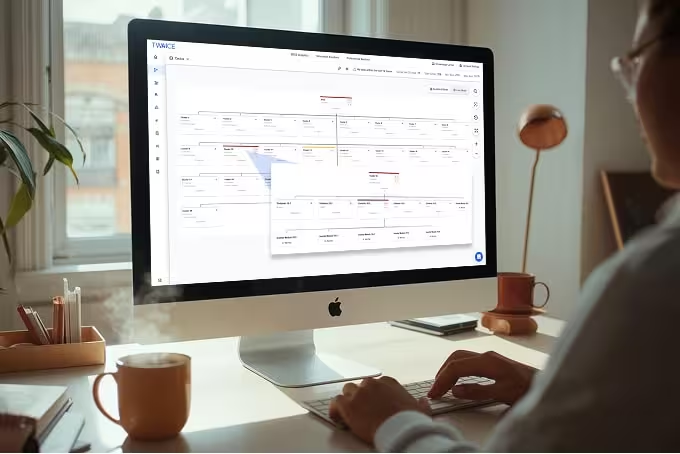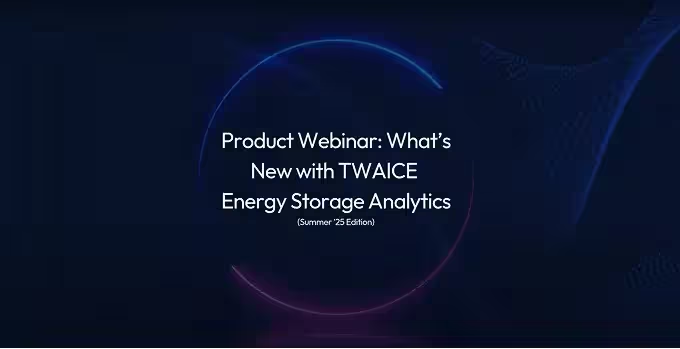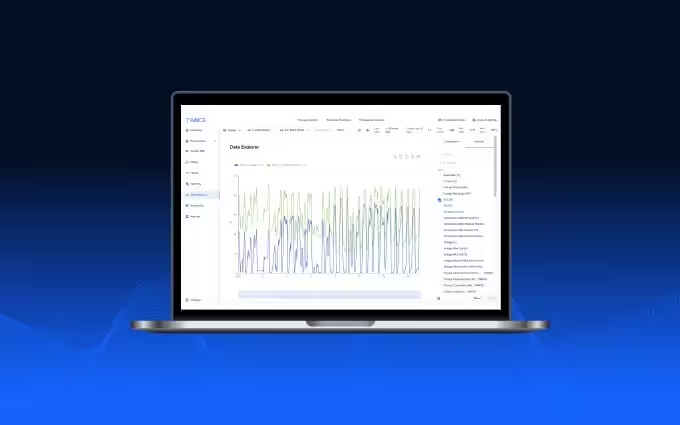Performance Manager: Improve BESS Performance & Secure Revenue
In this article, we discuss how the new TWAICE Performance Manager helps asset managers to proactively fix issues with underperforming system components, reducing revenue loss. This means they ensure maximum possible availability for their asset with minimal manual effort.

Improve BESS Performance & Secure Revenue with the TWAICE Performance Manager
In this article, we discuss how the new TWAICE Performance Manager helps asset managers to proactively fix issues with underperforming system components, reducing revenue loss. This means they ensure maximum possible availability for their asset with minimal manual effort.
Background
Battery Energy Storage Systems (BESS) have emerged as a game-changer in an era where the energy landscape is rapidly evolving, offering unparalleled opportunities to capitalize on the dynamic energy markets. These systems not only enhance the integration of renewable energy sources but also provide critical services such as energy arbitrage or frequency regulation that can turn fluctuations in energy demand into lucrative business prospects.
Ensuring high BESS availability and performance is essential for unlocking multiple revenue streams in today's competitive energy sector and maximizing the opportunities of the energy market. However, multiple challenges stand in the way of a successful business case. The volatility of the energy market, significantly influenced by weather conditions, poses substantial challenges. Renewable energy sources like solar and wind, which are heavily dependent on weather patterns, can lead to unpredictable and fluctuating energy production. A recent analysis by Modo Energy showed that in 2023, in the ERCOT (Electric Reliability Council of Texas) market, 50% of revenue was made in just 13 days, all of which were during the summer months.
Performance issues within the BESS, such as cell imbalances, can significantly hinder the ability of asset owners to capitalize on energy market opportunities, as they limit the amount of energy that can be charged and discharged. If one individual cell is only able to charge to, for example, 60%, this limits the performance of all other cells in the string. (Read this whitepaper for more detail about cell imbalances). If the system is experiencing problems with availability or performance on potentially high revenue days, the asset owners will leave considerable amounts of money on the table. However, pinpointing the root cause quickly and efficiently without the right tools is near-to impossible.
In this article, we discuss how the TWAICE Performance Manager helps asset owners to address these challenges head on, ensuring that energy storage assets are not only reliable and efficient but also a significant source of revenue in the ever-evolving energy landscape.
Stop Guessing, Start Optimizing
The Performance Manager provides asset managers and engineers information to improve system availability & performance all in one glance, meaning they ensure maximum possible performance for their asset, so it meets revenue expectations with minimal manual effort. This is a much quicker and safer solution than spending hours on data analysis or relying on systems that do not provide the necessary level of granularity to pinpoint the specific underperforming component.
The Performance Manager focuses on two central elements that cause underperforming components: cell imbalances & thermal management.
Pinpoint Underperforming Components Without Manual Effort
Identifying insights into cell imbalances and thermal management would involve days of data analysis – if the data is even accessible. The Performance Manager shows all underperforming components in a list, so it is clear what needs to be balanced and / or replaced. The list is split into two categories: items that are already impacting performance and items that will soon impact performance if no actions are carried out, providing vital transparency.

Start With the System Overview, Then Dig Deeper
After gaining a high-level overview into the individual components that need to be addressed, you can continue to dig deeper to get more information. For example, you can see exactly where the underperforming components are located within the system, color-coded so it is clear where the most severe imbalances are.

A trend analysis feature then indicates how the issue has progressed over time and indicates whether it is a weak cell (and needs to be replaced) or whether you need to carry out system balancing.

Proactively Improve System Performance
The insights gained can be used to proactively improve system performance by implementing preventative maintenance actions:
- Recommendations of whether strings need to be balanced or replaced (based on whether they are weak or simply imbalanced).
- The exact location of the component is shown, providing guidance to on-site engineers.
- Severity level is shown to help prioritize maintenance activities
- The components can be analyzed in more detail within the TWAICE platform. Additionally, TWAICE experts assist in deriving further possible root causes and actions to carry out.
Make the Most Out of Your Assets
The TWAICE Performance Manager helps you to capitalize on energy market opportunities. You can:
- Immediately identify underperforming components that are harming revenue without manual effort.
- Get recommendations on what to fix including categorization, helping you prioritize the components that will have the biggest impact on performance
- Improve revenue by proactively identifying and addressing imbalances. Even small imbalances can have a huge impact on revenue. According to TWAICE internal ROI calculations, a 300 MWh system in ERCOT would gain an additional $1.84 million per year by solving imbalance issues.
Need more information? Join our live demo!
Sign up for the next live group demo and learn how TWAICE can transform your BESS operations. In just 30 minutes, you’ll get a demo of key features and use cases, and engage with our product experts for a live Q&A.





.avif)
.avif)